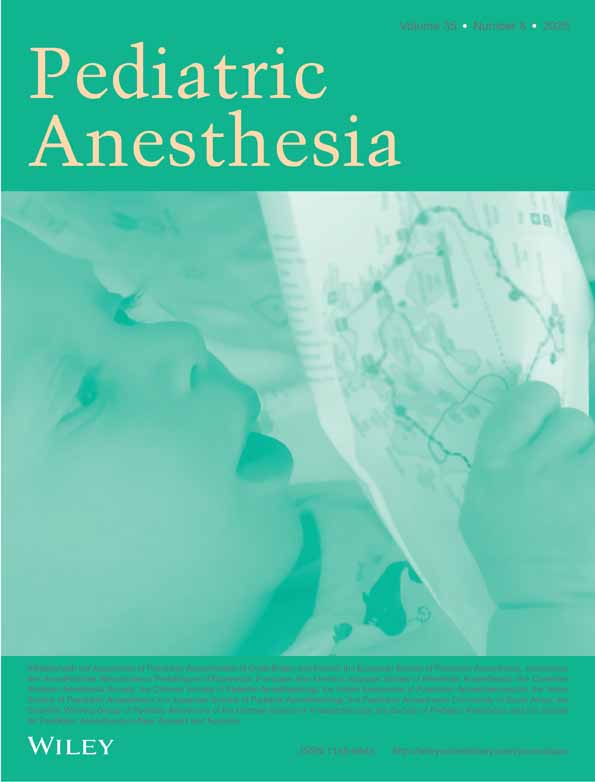The effect of baricity of intrathecal morphine in children receiving tetracaine spinal anaesthesia for cardiac surgery: a preliminary report
Abstract
Background: This prospective, randomized study examined the effect of baricity of intrathecal preservative-free morphine on the duration of postoperative analgesia and incidence of side-effects in infants and children receiving high spinal anaesthesia with hyperbaric tetracaine in combination with a light general anaesthetic.
Methods: Fourteen infants and children, aged 7–91 months, undergoing repair of either uncomplicated atrial or ventricular septal defects, were randomized to receive either 10 μg·kg–1 of intrathecal morphine in combination with 0.5% tetracaine D10 (hyperbaric morphine group) or intrathecal morphine mixed with saline and injected sequentially after the administration of 0.5% tetracaine D10 (hypobaric morphine group). After spinal injection, patients were positioned in 30° of Trendelenburg for a minimum of 10 min. Postoperatively, patients were monitored for a minimum of 12 h. Pain scores and the incidence and severity of side-effects were recorded every 1 h.
Results: All patients were extubated at the conclusion of surgery without any incidence of respiratory depression. There was a decreased incidence of vomiting in the hypobaric morphine group and no significant difference in the duration of analgesia.
Conclusions: When intrathecal morphine is administered in conjunction with a hyperbaric tetracaine spinal to paediatric cardiac patients in the head down position, sequential administration of the hypobaric solution may mitigate side-effects.




